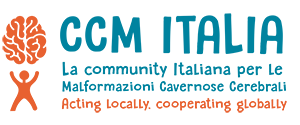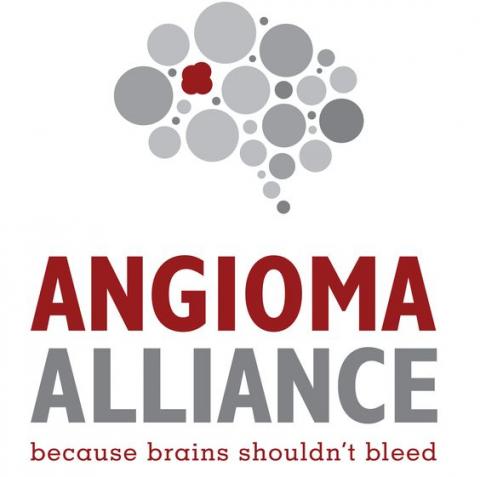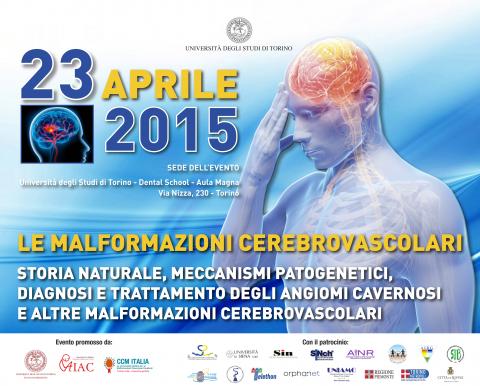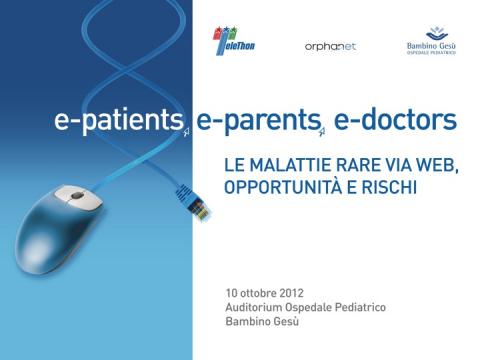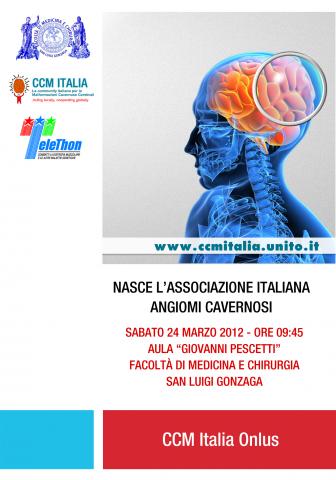Meeting ed eventi
eventi
The Dupont Circle Conference Hotel – Washington, DC (USA)
November 10th - 11th, 2016
SCARICA IL PROGRAMMA DEL MEETING
Gallery
The 12th Annual Angioma Alliance Cerebral Cavernous Malformations (CCM) Scientific Meeting was held in Washington, DC USA at The Dupont Circle conference hotel on November 10-11, 2016. As in the past years, the goal of this meeting was to bring together many of the key players in the CCM research field to discuss their latest research in an open and friendly atmosphere. Indeed, this meeting represents an important networking and collaboration-building event that has a track-record of facilitating the development of international research collaborations focused on CCM disease. The final agenda, including session and oral presentation titles and speakers, is available at the following link: “The Angioma Alliance 2016 CCM Scientific Meeting Agenda”.
Liaison Capitol Hill Hotel and Conference Center – Washington, DC (USA)
November 19th - 20th, 2015
SCARICA IL PROGRAMMA DEL MEETING
Gallery
The Angioma Alliance 11th Annual CCM Scientific Meeting was held on November 19th and 20th, 2015 at the Liaison Capitol Hill hotel in Washington DC (USA).
Nearly 80 attendees with complementary expertise and interests encompassing different research fields, including molecular, cellular and developmental biology, human genetics and genomics, and clinical research, gathered together from the United States, Canada, Brasil, Italy, France, Germany and Australia to share and discuss the latest research data and to develop new collaborative efforts. Indeed, presentation topics of this two-day meeting covered all fields pertaining to CCM research, including genetics, animal models, proteomics, vascular biology, signaling, clinical, surgery, imaging, as well as the 2015 meeting theme, Reconciling Models in CCM Translational and Clinical Research.
The final agenda, including session and oral presentation titles and speakers, is available at the following link: “The Angioma Alliance 2015 CCM Scientific Meeting Agenda”.
As in previous years, Angioma Alliance has selected some young scientists to receive a Trainee Travel Award for presenting their work as an oral presentation at the 2015 CCM Scientific Meeting, including two young scientists from Italy, Eliana Trapani, a graduate student at the University of Torino, and Noemi Rudini, a postdoctoral scholar at the FIRC Institute of Molecular Biology in Milan.
In particular, Eliana Trapani presented a talk describing a multidisciplinary cooperation among clinical and research groups of the CCM Italia network that has recently provided significant breakthroughs into the understanding of the molecular mechanisms underlying CCM pathogenesis and the development of new therapeutic strategies (EMBO Mol Med 2015; Rare Diseases 2016).
For more information, please see the Angioma Alliance Newsletter Winter 2016 (pag. 6-8).
Cited references:
Marchi S, Trapani E, Corricelli M, Goitre L, Pinton P, Retta SF. (2016). Beyond Multiple Mechanisms and a Unique Drug: Defective Autophagy as Pivotal Player in Cerebral Cavernous Malformation Pathogenesis and Implications for Targeted Therapies. Rare Diseases, 2016, 4(1): e1142640.
Marchi S, Corricelli M, Trapani E, Bravi L, Pittaro A, Delle Monache S, Ferroni L, Patergnani S, Missiroli S, Goitre L, Trabalzini L, Rimessi A, Giorgi C, Zavan B, Cassoni P, Dejana E, Retta SF, Pinton P. (2015). Defective autophagy is a key feature of cerebral cavernous malformations. EMBO Mol Med, 2015, 7(11):1403-1417.
Aula Magna Dental School, Università di Torino, Lingotto (via Nizza, 230) - Torino, Italy
Giovedì 23 Aprile 2015
SCARICA IL PROGRAMMA DEL CONVEGNO
Gallery
On April 23rd, CCM Italia organized the 2015 Italian Cerebral Cavernous Malformation Scientific Meeting. The distinguished venue was the Aula Magna of the Torino University School of Medicine located in the Lingotto Conference Center, Torino, Italy. The initiative was promoted and supported by the Associazione Italiana Angiomi Cavernosi (AIAC) and the University of Torino School of Medicine, as well as by the most relevant Italian Scientific Societies in clinical and basic research fields related to Cerebrovascular Diseases.
The scientific organizers, Professor Francesco Retta (University of Torino), Lorenza Trabalzini (University of Siena) and Marco Fontanella (University of Brescia), have been honored to host nearly 100 attendees, including 40 speakers and moderators that presented and discussed the state of the art and future perspectives in the field of CCM disease.
The meeting was organized with the dual aim of providing an opportunity of knowledge upgrading for physician and MD/PhD post-graduate trainees in medical disciplines, and an occasion for Italian clinical and basic researchers to share and discuss the latest clinical data and research findings and to develop new hypotheses and collaborations. Indeed, the multidisciplinary nature of the meeting offered a unique opportunity to the various participating scientists interested in understanding the multifaceted aspect of CCM disease, including neurosurgeons, neurologists, neuroradiologists, general pathologists, geneticists and molecular biologists, to look at multiple and complementary questionsfrom different angles in order to better understand the full spectrum of the disease and provide new scientific insights through innovative and integrated research approaches.
The scientific course/meeting was opened by the greetings of local authorities, including the Vice-President of the College of Physicians and Surgeons of Torino (OMCeO-TO) and the Dean of the University of Torino School of Medicine, and the speech of Massimo Chiesa, President of the Associazione Italiana Angiomi Cavernosi (AIAC), which recounted his more than 35 years of experience and feelings as a CCM disease affected patient, and shared his wishes to spread awareness of the disease and help scientists and patients in tackling the disease.
Among the most interesting features of the 2015 Italian CCM Scientific Meeting there were complementary and comprehensive presentations describing the recent advances in diagnosis and clinical management of CCM disease, including significant advances in neurological, neuroradiological and genetic diagnosis, and neurosurgery procedures, as well as recent progress into the understanding of pathogenic mechanisms and the identification of risk factors of prognostic value associated with disease onset, progression and severity. In particular, given the large inter-individual variability in susceptibility to develop the most severe clinical features of CCM disease, including ICH, the latter is a major current research challenge to allow the prediction of disease outcome and provide better options for disease prevention and treatment, thus ultimately matching patients with individualized treatment.
The full meeting agenda, complete with talk titles and presenter information, can be found at the following links:
Bethesda North Marriot Hotel and Conference Center – Washington, DC (USA)
November 6th - 7th, 2014
SCARICA IL PROGRAMMA DEL MEETING
Gallery
Il 10° convegno scientifico dell’Angioma Alliance, interamente incentrato sulle Malformazioni Cavernose Cerebrali (CCM – dette anche Angiomi Cavernosi o Cavernomi), si è tenuto il 6 e 7 novembre 2014 presso il Bethesda North Marriot Hotel and Conference Center di Washington DC (USA).
Circa 70 professionisti con competenze ed interessi in campi di ricerca diversi e complementari, quali la biologia molecolare, cellulare e dello sviluppo, la genetica umana e la genomica, e la ricerca clinica, provenienti da Stati Uniti, Canada, Italia, Francia, Gran Bretagna e Brasile, si sono riuniti per condividere e discutere gli ultimi dati di ricerca e per sviluppare nuove collaborazioni.
Quest’anno ricorreva il 10° anniversario del convegno organizzato da Connie Lee, Presidente dell’Angioma Alliance, che è stato onorato dalla partecipazione del Direttore dei National Institutes of Health (NIH) degli Stati Uniti, Prof. Francis Collins, e ha visto germogliare i semi delle numerose condivisioni e collaborazioni scientifiche maturate nel corso delle precedenti edizioni, generando importanti scoperte sui meccanismi molecolari alla base della patogenesi della malattia CCM e la definizione di nuove strategie terapeutiche.
In particolare l'edizione di quest’anno ha offerto nuove evidenze sulle molteplici e complesse funzionidelle proteine CCM, su fattori di rischio di valore diagnostico e prognostico associati alla progressione clinica e alla gravità della patologia, e sull'efficacia di nuovi composti con potenzialità terapeutiche in diversi modelli cellulari e animali della malattia CCM, schiudendo nuove prospettive per una diagnosi ed una prognosi più precoci e accurate ed un futuro trattamento farmacologico sicuro ed efficace della malattia nell’uomo.
In particolare, il Prof. Francesco Retta ha presentato nuovi dati sul ruolo dello stress ossidativo nella patogenesi delle CCM, derivanti da collaborazioni multidisciplinari tra diverse unità del network nazionale di ricerca CCM Italia e con gruppi di ricerca internazionali.
Specificamente, i principali dati riportati sono stati i seguenti:
La caratterizzazione di nuovi meccanismi molecolari redox-sensibili legati alla perdita di funzione dei geni CCM, che ha coinvolto diversi gruppi del network di ricerca multidisciplinare CCM Italia e ha aperto nuove strade per lo sviluppo di strategie terapeutiche più mirate ed efficaci per la malattia CCM.
L'identificazione di fattori di rischio genetici legati allo stress ossidativo e associati ai quadri patologici più gravi della malattia CCM (numero di lesioni, grandezza della lesione e tendenza al sanguinamento). Queste evidenze sperimentali, risultanti da una collaborazione in corso con le dott.sse Helen Kim e Helene Choquet del Centro di Ricerca Cerebrovascolare (CCR) dell’Università della California a San Francisco (UCSF, Stati Uniti), suggeriscono che la variabilità genetica interindividuale possa contribuire a diversi gradi di predisposizione nello sviluppare una forma più severa della malattia e indicano potenziali fattori di rischio e biomarcatori di valore diagnostico e prognostico.
La dimostrazione che alcuni composti dotati di proprietà antiossidanti, tra cui due farmaci già noti, il colecalciferolo (vitamina D3) ed il TEMPOL (uno scavenger dell’anione superossido), sono efficaci nel revertire fenotipi associati alla perdita di funzione dei geni CCM in modelli cellulari e animali della malattia, suggerendo potenziali benefici terapeutici. Tali risultati, derivanti da una collaborazione tra gruppi di ricerca dell’Università dello Utah negli Stati Uniti, coordinati dal Prof. Dean Li, e due unità di ricerca del network CCM Italia (Torino e L'Aquila), coordinate dal Prof. Francesco Retta, supportano ed estendono l’ipotesi originale che lo stress ossidativo gioca un ruolo fondamentale nella patogenesi delle CCM (Goitre et al, 2010; Goitre et al, 2012; Guazzi et al., 2012; Goitre et al, 2014), schiudendo nuove e concrete prospettive terapeutiche. Il lavoro di ricerca che riporta in forma estesa questi risultati è in corso di pubblicazione e sarà presto disponibile online.
Washington Plaza Hotel, 10 Thomas Circle, – Washington, DC (USA)
7-8 Novembre 2013
PROGRAMMA DEL MEETING SCIENTIFICO
Report dell'Angioma Alliance sui contenuti del meeting scientifico
Current Research Projects
Londra (UK) 16 Giugno 2013
Gallery
Cavernoma Alliiance UK held its Seventh International Forum at the Grange Holborn Hotel on the 16 June 2013 with a record attendance of 147 participants, many affected by cavernomas of the brain and spine.
CA UK had organised a star-studded line-up of speakers.
Professor Rustam Al-Shahi Salman spoke about the importance of establishing a cavernoma clinical trial.
Professor Dr Helmut Bertalanffy gave an exceptional talk entitled "Management of Cavernous Malformations of the Brain and Spinal Cord: Well-established and New Concepts".
After coffee, the CA UK Forum broke into six discussion groups, this year dealing with the psychological impact of a cavernoma, living with a cavernoma, living with someone with a cavernoma, cavernoma and surgery, incidental and asymptomatic cavernoma and spinal cavernoma. The latter discussion group was well attended in a year dubbed as the year of the spinal cavernoma. With Professor Bertalanffy's talk including his experience of spinal cavernoma and a workshop on the subject, members with spinal cavernoma were well-informed.
In the afternoon a talk by Dr Gordon Plant, a neurologist with a specialism in neuro-ophthamology, Dr Plant gave a fascinating insight into some of the symptoms such as (double vision), that is a predominant feature of various cavernoma.
After a brief break CA UK was lucky enough to have Sacha Bonsor, author of Dipped into Oblivion, her documented journey of a brainstem cavernoma removal by Dr Robert Spetzler in Arizona join us in a discussion led by Emily Fletcher, a member and now a trustee of the Alliance.
An Annual General Meeting followed which duly elected Professor David C S White CBE as chair of the trustee board.
Additional Links:
- How to survive a brain haemorrhage – twice | by Sacha Bonsor
- How to survive a brain haemorrhage – twice | The Times
- My 'brain tumours' were abnormal blood vessels | Echo-news
- Helmut Bertalanffy – The Art of Brain Surgery
- CCM Breakthrough
- The Big Lottery Fund (Reaching Communities)
- DORCHESTER: Big Lottery money will help charity continue vital work
- Ian Stuart, Cavernoma Alliance UK Founder and Co-ordinator
Bethesda - Washington, DC (USA)
15-16 Novembre 2012
PROGRAMMA DEL MEETING SCIENTIFICO
Report dell'Angioma Alliance sui contenuti del meeting scientifico
Current Research Projects
Convegno Orphanet-Telethon
E-patients, e-parents, e–doctors: le malattie rare via web
Il 10 ottobre 2012 Telethon e Orphanet hanno organizzato presso l’Ospedale Pediatrico Bambino Gesù di Roma il convegno “e-patients, e-parents, e–doctors: le malattie rare via web - opportunità e rischi”.
Un evento dedicato a medici, pazienti, associazioni per approfondire la conoscenza del web e dei social network come strumenti a supporto della comunicazione delle malattie rare e della ricerca scientifica.
Costituzione dell'Associazione Italiana Angiomi Cavernosi
Workshop inaugurale
Sabato 24 marzo 2012, presso la Facoltà di Medicina e Chirurgia "San Luigi Gonzaga" dell'Università di Torino, è nata l'AIAC: l'Associazione Italiana Angiomi Cavernosi.
29 febbraio 2012, Torino
http://www.rarediseaseday.org/
RARE DISEASE DAY
La "Giornata delle Malattie Rare" è il più importante appuntamento nel mondo per i malati rari, familiari, operatori medici e sociali del settore. Essa si celebra l'ultimo giorno del mese di febbraio di ogni anno.
CONCERTO AL CONSERVATORIO PER LE MALATTIE RARE
l 29 febbraio 2012, alle ore 21, presso la Sala Concerti Giuseppe Verdi del Conservatorio di Piazza Bodoni a Torino, si terrà invece uno spettacolo musicale del duo MGINC.
Il concerto, con ingresso gratuito, è dedicato ai pazienti, ai loro familiari ed amici, a tutti gli appartenenti alle Associazioni, agli operatori ed a coloro che vogliano condividere la serata.
Vi preghiamo di confermare la Vostra partecipazione ed il numero approssimativo dei vostri invitati entro il 23 febbraio, come da richiesta avanzata dal Conservatorio stesso in ottemperanza alle normative di legge sulla sicurezza.
Per informazioni e adesioni:
Sig.ra Rita Maria Bianco Cell. (14.00-18.00) 3465148042
email: biari2004@libero.it
DISTRIBUZIONE MATERIALE INFORMATIVO DELLE ASSOCIAZIONI MALATTIE RARE.
In occasione del concerto al conservatorio saranno consegnate agli spettatori delle cartelline all’interno delle quali ogni associazione potrà inserire del materiale informativo.
GAZEBO INFORMATIVI IN PIAZZA CASTELLO.
Durante la giornata del 29 febbraio 2012 sono previsti gazebo informativi nella zona pedonale di Piazza Castello, zona Palazzo Madama, dalle ore 9 alle ore 18.
